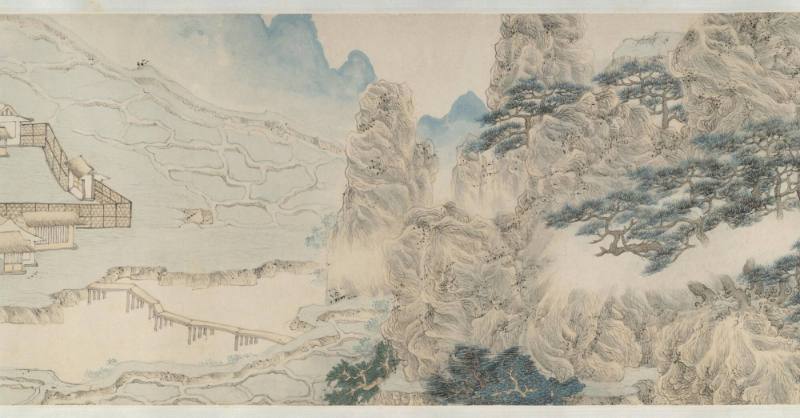












Object Details
Artist
Xiao Yuncong
Medium
Handscroll: ink and colors on paper
Dimensions
11 13/16 x 3 1/8 inches (30 x 8 cm)
Credit Line
Gift of Professor Ray Wu and Christina C. Wu
Object
Number
87.055.001
Xiao Yuncong was from Wuhu (in today’s Anhui province). His father enjoyed painting and encouraged(…)
Xiao Yuncong was from Wuhu (in today’s Anhui province). His father enjoyed painting and encouraged Xiao Yuncong to become a painter. Xiao and his brother joined the Fushe Society in 1638 in the struggle against the powerful palace eunuch Wei Zhongxian (1568–1627). After the fall of the Ming dynasty, Xiao Yuncong called himself Zhongshan Laoren, “Elder of Mt. Zhong,” implying his remembrance of the Ming Imperial Tombs on Mt. Zhong. In this way he was a typical yimin (“leftover subject”) artist who devoted his energy to scholarship, poetry, painting, and traveling in nature as a means of protesting the rule of China by foreigners. When he signed his paintings, he would only date them with the Chinese cyclical date, thus rejecting the Qing imperial reign date. Xiao also excelled in poetry and calligraphy. Best known for his shanshui hua (mountains-and-water painting), he often depicted his surroundings. This handscroll is laid out like a journey, inviting the viewer to enter from a small path. Along the way one passes a tranquil village sparsely dotted with houses, and occasionally encounters villagers brewing tea and reading in their studios. This remote village exudes a sense of the utopian Peach Blossom Spring. During the chaotic time of dynastic change, and suffering from the pain of losing his country, Xiao Yuncong could find solace in these peaceful mountains.












